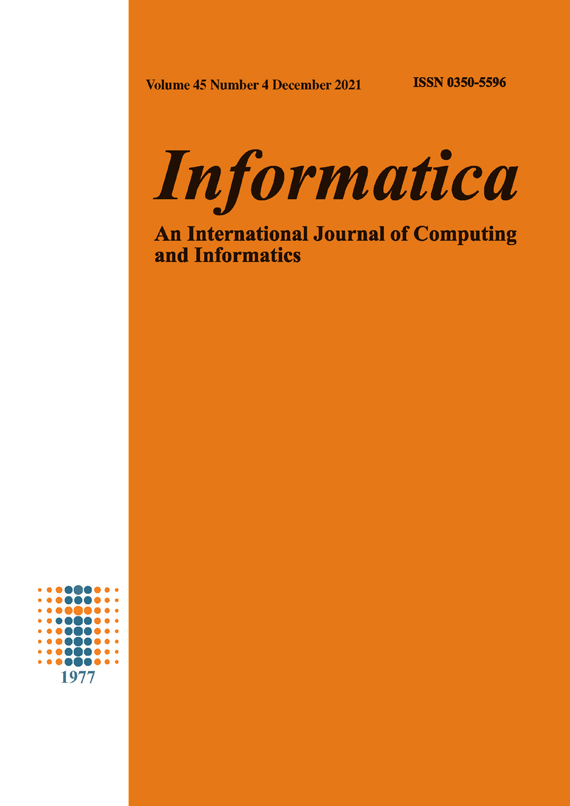Evaluation of Multimedia User Interface Design Method for M-learning (MobLearn): A Comparative Study
DOI:
https://doi.org/10.31449/inf.v45i4.3391Abstract
The multimedia m-learning method (MobLearn method) is a holistic and functional method that includes the key steps, methods, and techniques for using multimedia to create m-learning interfaces. In this paper, the MobLearn process was evaluated by comparing it to one of the latest m-learning methods by Stanton and Ophoff (2013( that has the same function. The comparative case study was employed to examine the degree to which two m-learning approaches are similar in terms of interface architecture and their main characteristics, their differences and the primary function of features that occur in one of them but not in the other. Based on this comparative study, the final version of MobLearn method has been introduced in two forms: high-level framework and method steps. In this version, the mapping strategies of m-learning have been applied where the mapping techniques deal with a different set of information types and a large variety of media.
References
AlDekhail, Maysoon (2015). “E-Learning Assistance and Application for the Auditory-Impaired Population: A Review with Recommendations.” Journal of Basic Applied Scientific Research (JBASR) 5(3), pp. 36-53
Bhowmik, M., Banerjee, B. & Banerjee, J. (2013) “Role of Pedagogy in Effective Teaching,” Education Research and Review, 2(1), pp. 1-5
Errity, A. (2016) “Human-computer interaction,” in Connolly, I., Palmer, M., Barton, H. and Kirwan, G. (eds.) An introduction to cyberpsychology. Oxon: Rutledge, pp.241-254
Goodrick, D., (2014) Comparative Case Studies: Methodological Briefs - Impact Evaluation No. 9, Methodological Briefs (No. innpub754)
Killilea, J. (2012). Leveraging mobile devices for asynchronous learning: Best practices. scs.org. University of Central Florida. Retrieved from: http://www.scs.org/upload/documents/conferences/autumnsim/2012/presentations/etms/4_Final_Submission.pdf (Accessed: 6 January 2018)
Lazar, J., Feng, J. & Hochheiser, H. (2017) Research methods in human computer interaction. 2nd ed.. USA: Morgan Kaufmann
Nagro, S. & Campion, R., ‘A method for multimedia user interface design for mobile learning.’ IEEE: Computing Conference. London, United Kingdom, 28-20 July 2017, pp. 585-590
Nagro, S. & Campion, R. ‘Evaluation of multimedia user interface design method for mobile learning.’ In: Proceeding of The 11th annual International Technology, Education and Development Conference (INTED). Valencia, Spain, 6-8 March 2017, pp. 1533-1541
Ryokai, K., Agogino, A. & Oehlberg, L. (2012) 'Mobile learning with the engineering pathway digital library.' International Journal of Engineering Education, 28(5), pp.1119–1126.
Stanton, G. and Ophoff, J. (2013) ‘Towards a Method for Mobile Learning Design.’ Informing Science and Information Technology, 10, pp. 501-522.
Downloads
Published
Issue
Section
License
I assign to Informatica, An International Journal of Computing and Informatics ("Journal") the copyright in the manuscript identified above and any additional material (figures, tables, illustrations, software or other information intended for publication) submitted as part of or as a supplement to the manuscript ("Paper") in all forms and media throughout the world, in all languages, for the full term of copyright, effective when and if the article is accepted for publication. This transfer includes the right to reproduce and/or to distribute the Paper to other journals or digital libraries in electronic and online forms and systems.
I understand that I retain the rights to use the pre-prints, off-prints, accepted manuscript and published journal Paper for personal use, scholarly purposes and internal institutional use.
In certain cases, I can ask for retaining the publishing rights of the Paper. The Journal can permit or deny the request for publishing rights, to which I fully agree.
I declare that the submitted Paper is original, has been written by the stated authors and has not been published elsewhere nor is currently being considered for publication by any other journal and will not be submitted for such review while under review by this Journal. The Paper contains no material that violates proprietary rights of any other person or entity. I have obtained written permission from copyright owners for any excerpts from copyrighted works that are included and have credited the sources in my article. I have informed the co-author(s) of the terms of this publishing agreement.
Copyright © Slovenian Society Informatika








